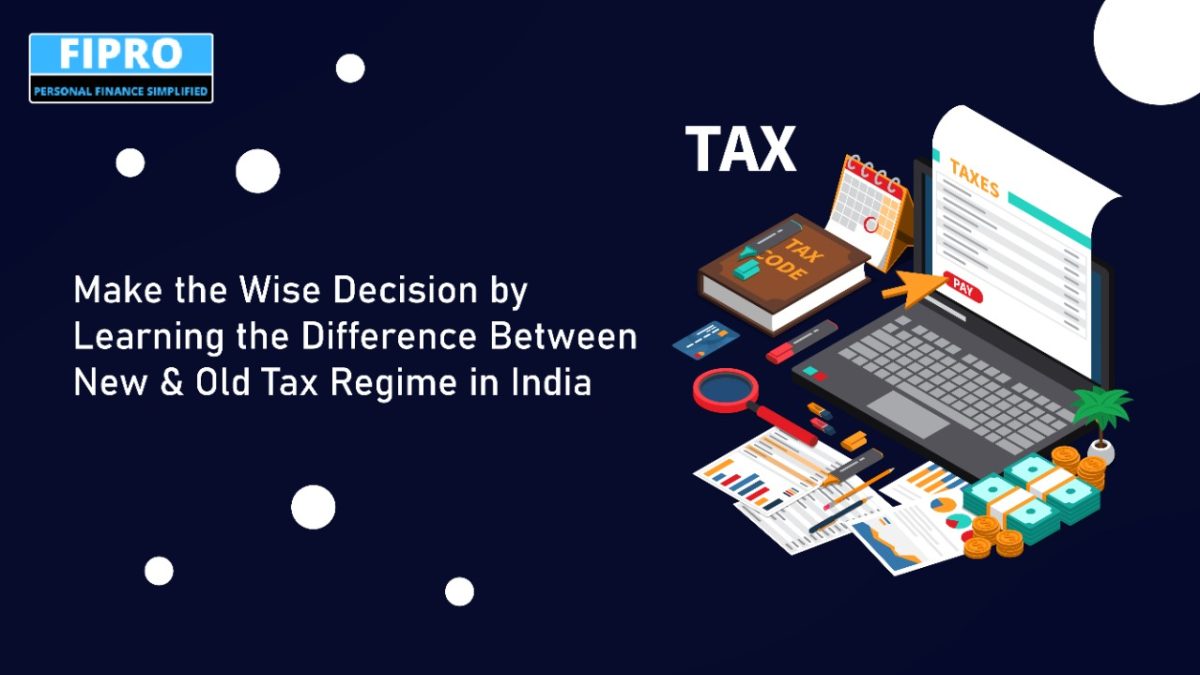
Investing in Mutual Funds vs Direct Stocks – Which One is Better Option?
March 7, 2022
Tips For Building Your Child Education Planning
March 21, 2022Effective from April 1, 2020 in India, an individual salaried taxpayer has been given the option to continue with the old tax regime and avail deductions/tax exemptions such section 80C, 80D deductions, HRA, LTA tax exemptions etc. or to opt for the new tax regime and forgoing approximately 70 deductions and tax exemptions. The new tax regime offers lower tax rates as compared to the old tax regime.
The new tax regime is different in two ways from the old one. Firstly, it has more slabs with lower tax rates. And secondly, all the major exemptions and deductions available to taxpayers in the existing (old) tax regime are not allowed if the new tax regime is chosen.
Choosing an old or new tax regime is completely your own decision and it will depend on your income structure, available deductions, and circumstances. While deciding to choose between the old & new tax regimes, one should look at the pros and cons of both regimes in order to make a wise decision.
To avoid the cumbersome procedure of choosing which tax regime is best suited, a financial planner may offer specialized services in tax planning and asset allocation. A Certified Financial Planner also helps clients in risk management; retirement and estate planning to meet their current money needs and long-term financial goals. They use a structured process to guide clients toward careful financial decisions to maximize their potential for meeting life goals. Using their knowledge of personal finance, taxes, budgeting, and investments—combined with analytical tools and data that can illustrate potential outcomes—financial planners make recommendations, which help clients make informed decisions.
Under both income tax regimes, tax rebate of up to Rs 12,500 is available to an individual taxpayer under section 87A of the Income-tax Act, 1961. This would effectively mean that individuals having net taxable income of up to Rs 5 lakh would not pay any income tax irrespective of the tax regime chose by them.
List of the main exemptions and deductions that taxpayers will have to forgo if they opt for the new regime.
- Leave travel allowance exemption which is currently available to salaried employees twice in a block of four years.
- House rent allowance normally paid to salaried individuals as part of salary.
- Standard deduction of ₹50,000 currently available to salaried tax payers.
- Deduction available under section 80TTA/80TTB i.e. Deduction in respect of Interest on deposits in savings account) and 80TTB (Deduction in respect of Interest on deposits to senior citizens) will not be available to the taxpayers.
- Deduction for entertainment allowance (for government employees) and employment/professional tax as contained in section 16.
- Tax benefit u/s 24 on interest paid on housing loan taken for a self-occupied or vacant house property.
- Deduction of ₹15000 allowed from family pension under clause (iia) of section 57.
- The deduction claimed for medical insurance premium under section 80D will also not be claimable.
- Tax benefits for disability under sections 80DD and 80DDB will not be claimable.
- Tax break on interest paid on education loan will not be claimable-section 80E.
- Tax break on donations to charitable institutions available under section 80G will not be available.
- All deductions under chapter VIA (like section 80C, 80CCC, 80CCD, 80D, 80DD, 80DDB, 80E,80EE, 80EEA, 80EEB, 80G, 80GG, 80GGA, 80GGC, 80IA, 80-IAB, 80-IAC, 80-IB, 80-IBA,etc. will not be claimable by those opting for the new tax regime.
However, deduction under sub-section (2) of section 80CCD (employer contribution on account of the employee in a notified pension scheme—mostly NPS) and section 80JJAA (for new employment) can still be claimed.
| Income level (INR) | Old tax rate regime* | New tax rate regime |
| Up to 2,50,000 | 0% | 0% |
| 2,50,001 to 5,00,000 | 5% | 5% |
| 5,00,001 to 7,50,000 | 20% | 10% |
| 7,50,001 to 10,00,000 | 20% | 15% |
| 10,00,001 to 12,50,000 | 30% | 20% |
| 12,50,001 to 15,00,000 | 30% | 25% |
| Above 15,00,000 | 30% | 30% |
To ensure you’re making the right decision, thorough learning about both the tax regimes is as paramount as staying updated about new amendments proposed by the government. A financial advisor in Bangalore will help you decide what’s best for you, making sure you make the right decision.




